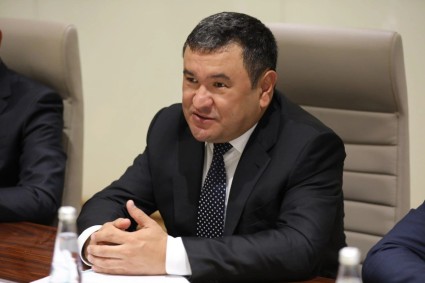Uzbekistan's public debt reached $43.38 billion as of July 1, having increased by $785 million in April-June, the Ministry of Economy and Finance said in a report.
The pace of borrowing has slowed. For comparison: in the first quarter (January-March), the public debt grew by $2.22 billion.
The ratio of public debt to the GDP rose from 33.6% to 34.2%.
The public external debt increased by $852 million over the quarter — to $36.4 billion, or by 28.7% to GDP (previously 28% to GDP). $20.4 billion (47%) of the debt was attracted at a fixed rate, and $15.8 billion (37%) — at a floating rate. While, 82% of the loan is denominated in foreign currency.
The national domestic debt decreased by $67 million — to $6.96 billion, or 5.5% of GDP (previously 5.5% of GDP). Probably due to the strengthening of the sum against the dollar.
The share of the government’s external debt was 84%, and the domestic — 16%.
In terms of Per capita, the national debt stood at $1,146 (versus $1,125 on April 1, 2025).
For comparison: five years ago, on January 1, 2020, the national debt stood at $17.8 billion.
The remaining debt which was attracted to support the budget reached $16.97 billion — this is the largest loan item. In the second quarter, such debt increased by $148 million (versus $1.5 billion in the first quarter). Budget support is the coverage of state budget expenses when domestic revenues (taxes, duties, profits of state-owned companies, etc.) are insufficient to finance all planned expenditure items: salaries, pensions, subsidies, infrastructure projects, state programs, etc.
In the energy sector (fuel, oil, gas, electricity, coal) ranks second overall — $5.89 billion, the balance increased by only $5 million. Whilst, the volume of loans in the oil and gas industry decreased by $143 million, and in the electric power industry it increased by $162 million.
The third place in terms of attracted loans is taken by the agriculture and water management, where the balance increased by $94 million — to $3.13 billion.
An additional $97 million was attracted for housing and communal services, due to which the balance in this area exceeded $3 billion.
The World Bank kept its first place among Uzbekistan's creditors, borrowing another $94 million at the end of the Q2 – to reach $7.84 billion (22% of the total amount of external public debt).
The World Bank was followed by the Asian Development Bank (ADB) on $7.46 billion (+$18 million), followed by international investors through purchase of issued Eurobonds - $5.78 billion (+$124 million).
Among financial institutions of foreign countries, Uzbekistan has the largest debt to the Export-Import State Bank and other organizations of China - $3.87 billion (+$226 million), as well as Japan - $3.19 billion (+$118 million).
The French Development Agency also provided a large loan of $141 million (the total balance is $1.16 billion).
Uzbekistan also raised $27 million from the Turkish Eximbank for the first time.
The currency structure of the external debt (which is one of the indicators of the actual risk to the economy associated with changes in the exchange rate) mainly consists of loans in dollars - 63% (previously 64%), Uzbek som - 11% (10%), Japanese yen - 7% (6%), euro - 8% (8%).












